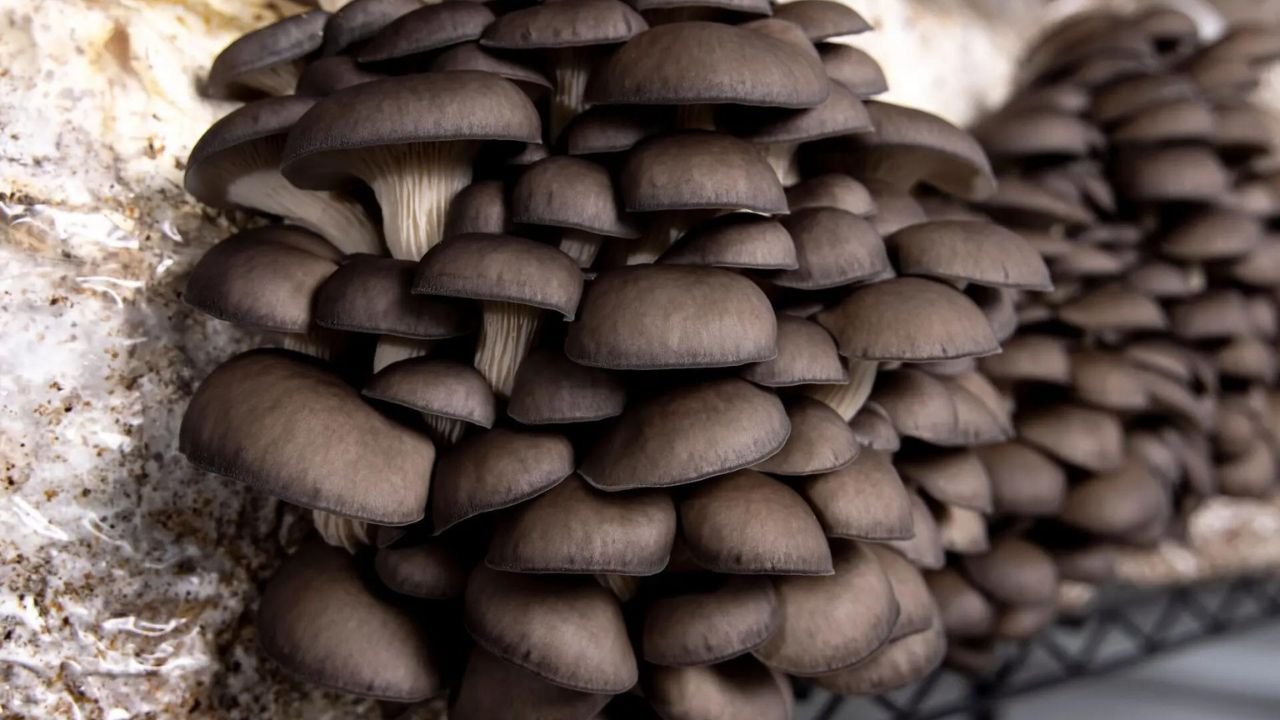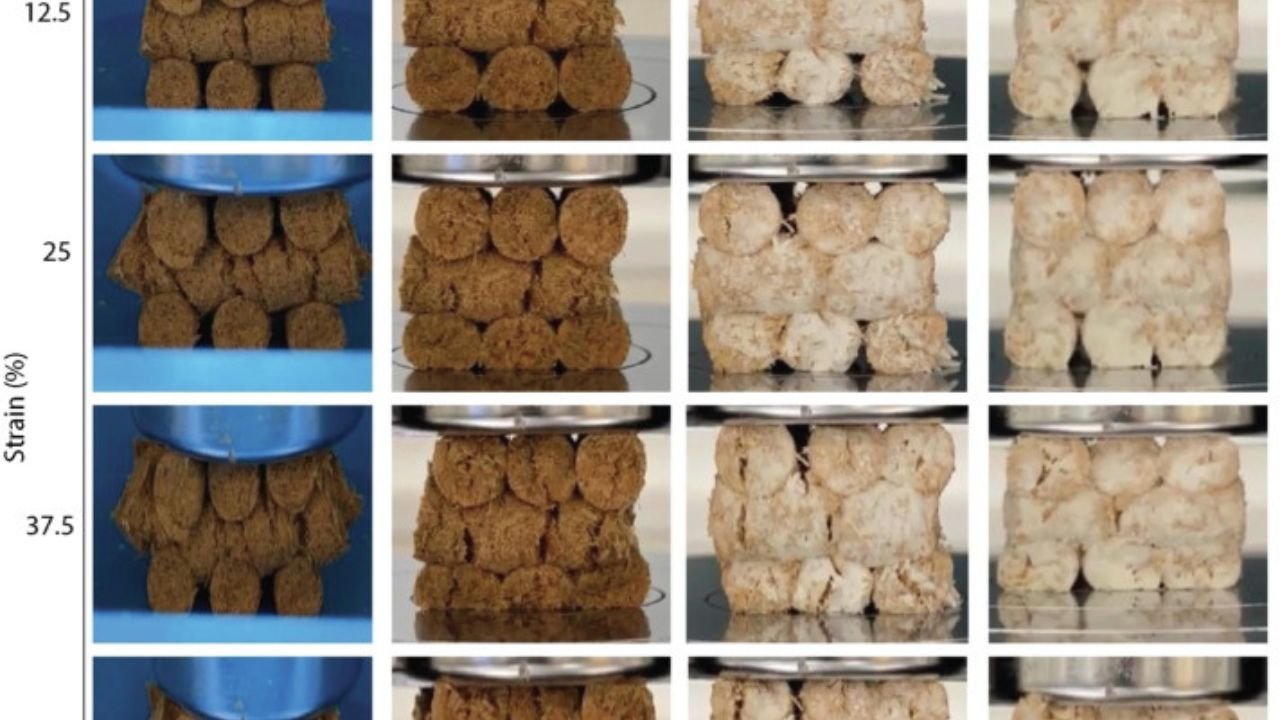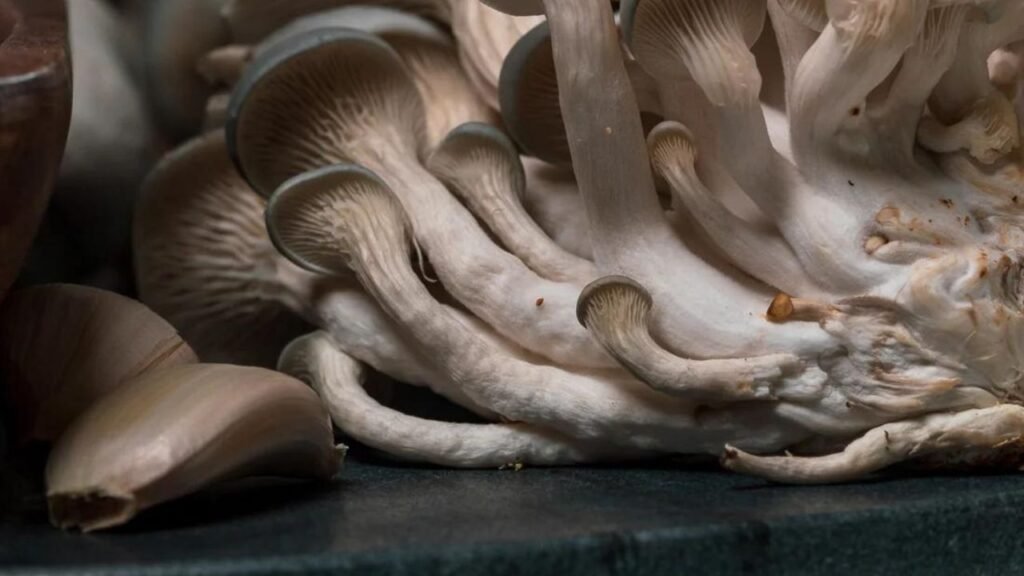Magic Mushroom
Mycelium Growth Day By Day: A Comprehensive Exploration
Mycelium, the intricate network of thread-like structures produced by fungi, is a captivating subject that has piqued the interest of scientists, artists, and environmentalists alike. Its growth, akin to a daily dance, is not only a marvel in nature but holds immense potential across various domains. Let’s embark on a comprehensive exploration of mycelium growth, delving into its diverse applications and the exciting possibilities it presents. At mycelium growth day-by-day core, mycelium is the vegetative part of a fungus, consisting of a vast network of hyphae. These fine threads weave through soil or organic matter, creating a complex web that serves as the foundation of the fungal organism. Mycelium functions as nature’s recycling mechanism, breaking down organic materials and replenishing the ecosystem with nutrients by playing a critical part in nutrient cycling and decomposition.
The Daily Dance: Mycelium Growth Dynamics
Mycelium growth is a dynamic process characterized by rapid expansion and intricate branching. Each day, these fungal networks extend their reach, exploring their environment in search of nutrients. Various factors, including environmental conditions, substrate composition, and the presence of other organisms, influence the growth. They were understanding these dynamics first signs of mycelium growth key to harnessing the full potential of mycelium in different first signs of mycelium growth, applications.
Rapid Expansion and Branching
Rapid expansion and branching characterize dynamic growth fueled by multifaceted factors. Market demand, technological advancements, strategic partnerships, and adept leadership play pivotal roles in steering the trajectory of expansion. The interplay of innovation, consumer trends, and operational agility propels organizations into diverse avenues. This growth is a result of a delicate balance, where adaptability to change, investment in talent, and responsiveness to emerging opportunities create a fertile ground for flourishing businesses.
Factors Influencing Growth
Factors influencing growth encompass a dynamic interplay of economic, technological, social, and environmental elements. Market demand, innovation, workforce skills, and governmental policies all shape the trajectory of growth for businesses and economies. Global trends, such as digitalization and sustainability, further impact growth dynamics. The ability to adapt to these factors, strategic decision-making, and fostering a resilient ecosystem is pivotal in navigating the ever-evolving landscape of growth opportunities and first signs of mycelium growth challenges.”
Brief Overview of Mycelium Growth

Mycelium growth is the vegetative part of fungi, consisting of a network of fine, thread-like structures called hyphae. Thriving in diverse environments, mycelium plays a crucial role in nutrient cycling and decomposition. As mycelium expands, mycelium growth day by day forms a complex web that aids in breaking down organic matter, promoting soil fertility. This natural network also fosters symbiotic relationships with plants, enhancing nutrient absorption. Notably, mycelium serves as the foundation for mushroom development, emerging when conditions are favorable. Beyond ecological benefits, mycelium has garnered attention for its potential in sustainable practices, including myco-remediation to clean polluted environments and myco-materials for eco-friendly products. Understanding mycelium growth unveils the fascinating and pivotal role fungi play in Earth’s ecosystems.
Applications in Agriculture
One of the remarkable aspects of mycelium is mycelium growth day by day symbiotic relationship with plants, known as mycorrhizae. Mycelium forms mutually beneficial connections with plant roots, enhancing nutrient absorption and improving the overall health of plants. This has significant implications for agriculture, offering a natural and sustainable way to boost crop yields while reducing the need for synthetic fertilizers.
Mycelium in Medicine
Beyond agriculture, mycelium has garnered attention for its medicinal properties. Some fungi produce compounds with antibiotic properties, offering potential solutions to combat drug-resistant bacteria. Researchers are exploring the therapeutic potential of mycelium-derived substances in the development of new pharmaceuticals, opening up exciting avenues for medical innovation.
Sustainable Packaging with Mycelium
In the quest for eco-friendly alternatives, mycelium has emerged as a promising material for sustainable packaging. By cultivating mycelium on agricultural waste, companies can create biodegradable packaging materials that reduce environmental impact. This way to speed up mycelium growth not only addresses the issue of plastic pollution but also contributes to a more circular and sustainable economy.
Artistic Ventures: Mycelium as a Creative Medium
The versatility of mycelium extends beyond practical applications; how to speed up mycelium growth has found its way into the realm of art. Artists and designers are exploring mycelium as a medium for sculptures and installations. The organic and ever-changing nature of mycelium adds a unique dimension to artistic creations, blurring the lines between nature and human expression.
Challenges and Controversies
While mycelium holds great promise, mycelium growth day by day cultivation has challenges and controversies. Ethical concerns surround the mass production of mycelium-based products, raising questions about the environmental and social implications of large-scale cultivation. Mycelium’s sustainable future depends on finding a balance between using it to its full potential and making sure ethical procedures are followed.
The Future of Mycelium Technology

As research in mycology advances, the future of mycelium technology looks increasingly promising. Ongoing studies explore the potential of mycelium in diverse fields, from bioremediation to the development of innovative materials. The adaptability and resilience of mycelium make it a fascinating subject for scientific inquiry, with the potential for mycelium growth stages groundbreaking discoveries in the years to mycelium growth day by day.
DIY Mycelium Projects
For enthusiasts eager to explore mycelium at home, there are various do-it-yourself projects that provide a hands-on experience with fungal cultivation. From creating small-scale mycelium sculptures to experimenting with different substrates, these projects offer a fun and educational way to engage with the world of mycology.
Mycelium and Climate Change
In the face of climate change, mycelium has emerged as a natural ally. Fungi play a crucial role in carbon sequestration, trapping carbon in the soil and mitigating the impact of greenhouse gas emissions. Understanding the relationship between mycelium and climate change opens new possibilities for environmental conservation and sustainable land management practices.
Culinary Delights: Edible Mycelium
Mycelium isn’t just a marvel in the natural world; mycelium growth day by day has also found its way into the kitchen. Some varieties of mycelium are not only edible but also nutritious, offering a unique addition to culinary creations. Exploring the culinary potential of mycelium opens up a new frontier in the world of gastronomy, where the fungal kingdom becomes a source of innovative and sustainable food options.
Mycelium Networks: Underground Communication
Mycelium Networks pioneers a groundbreaking realm of communication, delving beneath the surface to create a seamless network in the underground world. Inspired by the intricate web of mycelium fungi, mycelium growth temperature innovative system connects users through underground channels, fostering secure and efficient communication. The mycelium’s natural ability to transmit information is harnessed, offering a decentralized and resilient network. This underground infrastructure enhances privacy, minimizes environmental impact, and promotes sustainability. Mycelium Networks redefines connectivity, transcending traditional limitations and forging a path toward a new era of underground communication. Join us in exploring the depths of this organic network, where the unseen threads of mycelium weave a resilient tapestry of underground communication.
Mycelium in Architecture
“Mycelium in Architecture” explores the innovative integration of mycelium, the root system of fungi, into architectural design. This sustainable and versatile material offers a unique combination of strength, flexibility, and environmental friendliness. Architects are increasingly harnessing mycelium’s growth capabilities to create self-assembling structures and biodegradable building components. From insulation to structural elements, mycelium’s adaptability is reshaping the landscape of eco-friendly construction. Embracing this biological marvel not only reduces the ecological footprint of buildings but also opens new possibilities for biomimicry and regenerative design. As the architectural community continues to push boundaries, mycelium emerges as a promising frontier, merging nature and innovation in the pursuit of sustainable, resilient, and aesthetically compelling structures.
Conclusion
In conclusion, the fascinating phenomenon of mycelium growth unfolds day by day, underscoring the remarkable resilience and adaptability of these intricate fungal networks. The gradual progression highlights the symbiotic dance between mycelium and its environment as mycelium growth day by day navigates, expands, and weaves through the substrate. This mycelium not growing after inoculation dynamic process not only mirrors the tenacity of nature but also underscores the profound interconnectedness of all living organisms. As mycelium thrives with each passing day, how long to see mycelium growth serves as a testament to the intricate beauty and resilience embedded within the world of fungi, contributing to the intricate tapestry of life.
FAQ:
What is Mycelium?
A fungus’s mycelium, or vegetative portion, is made up of a web of tiny white threads known as
It serves as the root system of the fungus and is crucial for nutrient absorption and decomposition.
How Does Mycelium Grow Day By Day?
Mycelium growth is a dynamic process that depends on various factors such as temperature, humidity, substrate, and the specific fungus species. Generally, mycelium expands by sending out hyphae to explore and colonize its environment.
What Does Mycelium Need to Grow Successfully?
Mycelium requires a suitable substrate (organic material), proper temperature (varies by species), and humidity to thrive. Adequate ventilation and darkness are also essential for optimal growth.
How Long Does It Take for Mycelium to Grow?
The growth rate varies among different fungi species. In ideal conditions, you may observe visible mycelial growth within a few days to a couple of weeks. Patience is key, as the timeframe can differ significantly.
What Does Healthy Mycelium Look Like During Growth?
Healthy mycelium appears as a white, fluffy network spreading across the substrate. It should have a cotton-like texture and be free from discoloration, unpleasant odors, or signs of contamination.

